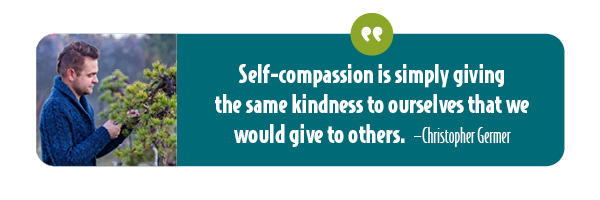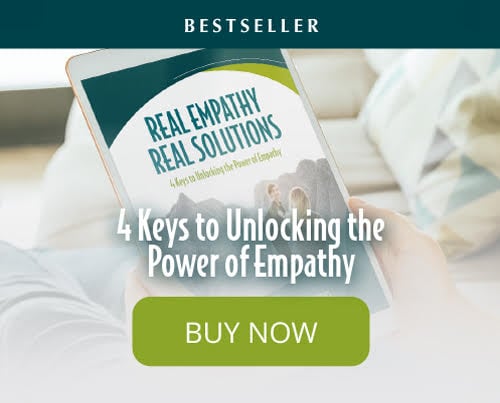“Gotta pick up the kids from school.” “Gotta get this report done by tomorrow.” “Gotta shop for dinner.” “Gotta pay the bills!” “Gotta get to the gym and lose this extra weight.” Gotta, gotta, gotta.
A lack of work-life balance and the need to get somewhere are themes I hear frequently. We are seekers. And personal transformation is high on the list for many. Yet, we are often unaware that we are reaching for something, even if it's self-growth. While ignoring what is happening right now within ourselves and around us, the present moment evades us.
Estimated reading time: 4 minutes
.jpeg?width=6000&name=Pottery%20Wheel_no%20face_Compressed_AdobeStock_142921661%20(1).jpeg) Being Present to Yourself Is Imperative for Inner Peace
Being Present to Yourself Is Imperative for Inner Peace
Imagine a sculptor taking their attention and hands off of the wet and pliable clay while the pottery wheel is spinning—a messy and chaotic result.
When was the last time you felt truly present? Do you feel like you're constantly behind and dividing yourself between multiple activities? Is multitasking a way of life?
You won't find inner peace by dividing yourself or rushing to the future.
Mindfulness and being present are crucial keys to living life with intention. And intentional living is the pathway to inner peace. However, it doesn't mean running off to a tropical forest or taking a month off work. Inner peace is achieved by being right within oneself.
Often, we ignore our emotions or use feeling stuffers and try to stop a rush of emotions that may be inconvenient, overwhelming, or confusing.
People ask me daily: “Why can’t I be patient with my child?” [Because you’re not.] or “I earn great money. Why can’t I just be happy with my job?” [Because you’re not.] or “Why can’t I control my temper?” [Because you don’t.]
The first step in all change and personal growth is accepting where we are.
Before we can acknowledge what is happening within ourselves, we cannot change anything.
Jeff Foster, the author of the book The Deepest Acceptance and founder of Life without a Centre, says it well:
“The question ‘What are you seeking in the future?’ is identical with the question ‘What are you running away from right now?’”
Personal transformation requires us to look at our own inner mirror, to look squarely at ourselves with compassion. If we keep running, we deny ourselves what we most need and want: acceptance and love.
For many, many years, I tried to be something I wasn’t. I fought an inner battle to be someone other than myself. Every time I missed the mark. Not because I lacked perseverance or the will to work hard, but because I was rowing upstream—against my stream of self. A sense of well-being escaped me because I refused to look squarely at what I was longing for and the needs asking me to stop sprinting away from the uncomfortable: self-acceptance.
Related reading: "What Is Emotional Intelligence?"
Judging Ourselves Leads to Discontent and Negative Chatter
The expectations I had of myself were relentless: “Don’t be so sensitive” [but I was]. “Don’t be so emotional” [but I was]. “Be calmer, be more patient, be a more understanding mother…” Blah, blah, blah.
My most significant source of peace, as well as a springboard for my biggest leap in growth, was stopping this merciless chatter and getting curious about my inner experience and what it was telling me. At first, I’d stop and check in, only to find myself judging my behavior harshly once again—and then judging myself because I was judging myself. Ever been on that hamster wheel? It’s no fun.
Then I decided that I was going to look at this quandary differently. My first step toward freedom came in accepting a quality that I loathed about myself: my “bitchy” reactions when I was stressed or overwhelmed.

Reframing Your Perspective and Behavior
Cognitive reframing is crucial when shifting behavior. Using this technique, I asked myself, “What‘s good about this bitchy quality?” And to my surprise, the answers came quickly:
- “I know how to stand up for myself.”
- “I can draw boundaries for others’ disrespectful behavior.”
- “It stops people in their tracks when they are trying to bulldoze me.”
- “It keeps me from feeling unsafe and helpless.”
- "I get to let off steam."
On and on, the awareness flowed like a rushing stream in Spring melt. At that moment, I accepted my b-i-t-c-h status with an impish sliver of prideful glee. Self-acceptance seeped in.

Even though the light side of my shadow self stepped forward, I was curious about what motivated my reactions. It turned out that my fierceness stepped forward whenever I felt helpless or unsafe, much like when I was a child. The crumbs back to my true self began to unfold.
I had learned to protect myself by my harshness and reactivity, so I knew that I needed to learn how to regulate my emotions before my defenses kicked in. This process meant sorting through the conflicting emotions, self-calming myself, and then responding confidently and respectfully. So I committed to sealing my lips and walking away from an uncomfortable interchange before blurting out some thoughtless or hurtful comment.
Guess what happened?
Soon after I made this agreement with myself, I blew it!—and then berated myself for failing. Ouch!
Self-Compassion Is Vital on the Path of Growth
My point here is that when we trip up and repeat a long-standing behavior after committing to do better, at first, we often fail and fall flat on our face.
That’s natural because our awareness is only the first step in change, so be gentle with yourself. We often revert to old behavior because it’s like a comfortable, well-worn pair of slippers. It's our default behavior on autopilot. We’ve worn that armor (or practiced that behavior) for so long that it's an engrained habit we need to rewire like the old electrical wiring in a century-old house. Therefore, our behavior is unconscious and our instant go-to. This tendency is where self-compassion and self-acceptance come in. It's difficult to keep going without them.
To make a permanent change, we must persevere. And my perseverance paid off.
Every time I felt like my personality was possessed by General Patton, I’d stop and get in touch with what was going on inside me. When I took the time to be present with myself and feel what was bubbling under the surface, the emotion dissipated. Once I identified and felt the emotion, I was able to respond lovingly and respectfully. Sometimes I had to take some space to calm down, but it got easier and easier to convert the energy. With a lot of practice, it became as easy as flipping a switch. And eventually, I was able to set healthy boundaries with loving firmness.
Do you want to get serious about learning how to set healthy boundaries? Get our emotional intelligence course on boundaries.
The faster we’re moving in life or pushing ourselves, the more likely it is that we’re ignoring something important trying to get through to us.
Slow down and listen.
Perhaps do a mind dump of the things stressing you or try journaling. Mindfulness in our daily lives leads to greater peace. Self-compassion creates a spaciousness within us.
Deep Dive: "Searching for Inner Peace? 5 Ways to Love Yourself."
 Don’t rush to get somewhere or to be something you’re not. Instead, stop. Be present to what you’re experiencing internally. Find out what you need and give it to yourself. It can be as simple as taking a few deep breaths or being grateful for your latest success that you brushed aside too quickly.
Don’t rush to get somewhere or to be something you’re not. Instead, stop. Be present to what you’re experiencing internally. Find out what you need and give it to yourself. It can be as simple as taking a few deep breaths or being grateful for your latest success that you brushed aside too quickly.
When I showed up for myself with curiosity and compassion, peace and confidence replaced my sense of overwhelming anxiety. The side effect of self-acceptance is self-love.
The answers lie within you.
Everyone is unique, so each person’s answer is different. That’s why it’s so important to listen to your own heart. When you find yourself rushing, busily trying to get somewhere, stop, take a few breaths, and ask if you’re trying to get away from an uncomfortable feeling or avoid a conflict. That something is your friend, and therein you will find your inner peace through self-acceptance.
You build a beautiful future by being present now.
And if you want support or desire to learn more about self-acceptance and emotional intelligence, contact us at Heartmanity.









